BMW's New Plant Built With Aging Workforce in Mind
by: fast company, 2011-02-18 14:20:11 UTC
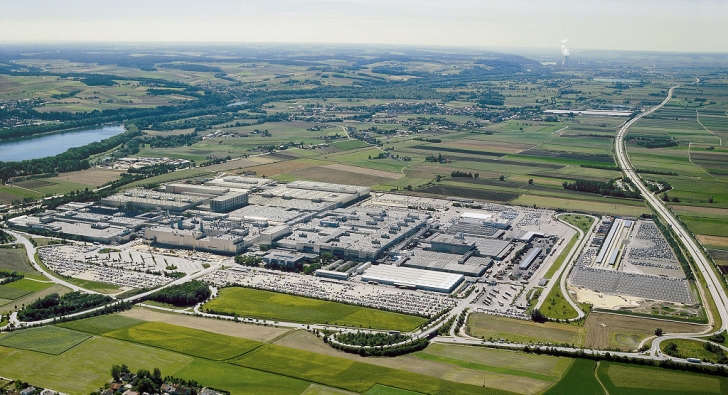
Life isn't easy for older car assembly line workers who are on their feet for hours each day. BMW's solution: segregate the older workers in a special factory built for their needs.
A new BMW factory in Dingolfing, is one result of Germany's low birthrate and lack of younger skilled workers. The plant, nicknamed Altstadt ("Old town" in German) is a fiftysomething factory worker's dream: better lighting, mobile tool carts, ergonomic back supports for workers who spend all day turning monkey wrenches, stools to sit on, and a greater variety of robots to perform menial tasks. Perhap most helpfully, the plant also includes a production line that has been slowed to a third of its normal speed, according to the UK Daily Mail.
The 200-person factory was designed by automotive engineers and industrial architects, with a little help from physical therapists and doctors. This isn't a one-off design for BMW, either. The automaker plans to expand the Old Town model to 4,000 workers in different factory locations.
It makes sense--the ratio of over-50 BMW workers will rise from 25% now to 45% in the next decade. But wouldn't it make more sense to implement some of these changes in all factories to prevent injuries and future problems?
Follow Fast Company on Twitter. Ariel Schwartz can be reached by email.


 Jordanian Health Program Connects Bedouin Mothers With MDs via Text
Jordanian Health Program Connects Bedouin Mothers With MDs via Text
by: fast company, 2011-02-18 21:54:53 UTC

The rural mothers of Jordan now have a direct, immediate line to qualified health care--their mobile phones.
SOHITCOM (Social Health and IT for Rural Communities) is a health initiative that connects rural mothers with competent
doctors via mobile phones in an effort to overcome literacy and
other social barriers. The service, in development for more than two years and available in five areas, is now gearing up for national expansion.
"We discovered that in rural areas there was no streamlined, organized
health care. And with regards to maternal health, the health of the
mother actually affects two people--her and her child. So we thought,
'How can technology help fix this gap between rural and urban places?'"
team leader Islam Ahmad told Fast Company.
Ahmad says that rural women typically live in Bedouin huts, but they
all have mobile phones. Using the SOHITCOM program, a mother can send a text to the designated
9444 government number with her question and choose the relevant
category--breast feeding, vaccination, fever, bleeding, or other
categories, and a doctor will respond. That answer
shows up on a corresponding website for others to view, but more
importantly, the answer is sent to the mother in an audio format (to account for possible illiteracy). All of the information is private, between the doctor and
her, which is meant to help the mothers feel comfortable sharing
information about bleeding or other sensitive information.
"In the countryside, the situation is different from the capital,"
says Ahmad. "Women in the countryside only get advice from mothers,
neighbors, and friends. It's almost forbidden to get outside advice
without permission from her husband. But every mother has a mobile.
The number of mobiles in Jordan is double the population."
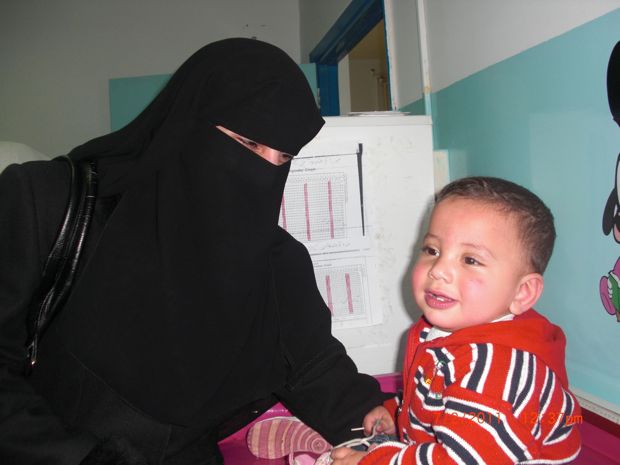
As part of the SOHITCOM project, which is an initiative of the Royal
Scientific Society (RSS) of Jordan, Ahmad and her team have rolled out
a parallel vaccination alert campaign, which is tailored to rural Jordanian women.
"When we told mothers that we needed their mobile numbers to send them
alerts to get vaccinated, they were so happy because this is a problem
they generally face. The fathers usually don't remember and the
mothers are usually illiterate. Or she doesn't know about the
importance of vaccinations for her child. So sending alerts to mothers
from the government is very effective. When a mother receives an SMS
from the government, she feels important and special, like 'the
government cares for me.'"
Ahmad is even trying to enlist top-ranking doctors who treat Jordan's elite--including the royal
family--to help respond to questions from the rural women. That would
certainly help bridge the gap between rural and urban
places with mobile technology.
Follow Fast Company on Twitter.


 New magnifying film increases solar panel efficiency by up to 300 percent
New magnifying film increases solar panel efficiency by up to 300 percent
by: Ecofriend, 2011-02-19 19:59:51 UTC
Piyaliswamy:

Limited fossil resources and environmental concerns have long focused our attention to search out for alternative energy sources. However, researchers in this field have found no parallel to the radiant energy from the sun. Despite this discovery and their hard work, growing awareness among common person and all the public money spent in its development we find little industrial progress over the years to tap this undying energy source. The reason is the high costs associated with solar panels that form the filter to convert solar energy into electric energy, making it economically not a viable energy option. However, a new breakthrough in this field is likely to revolutionize its commercial harnessing.
US based HyperSolar Inc. has developed a new breakthrough technology using the science of photonics to invent a magnifying layer which utilizes the solar cells more efficiently by almost 300%.
How it works
The solar panel that generates electricity constitutes of several solar or photovoltaic (PV) cells packaged together. Crystalline silicon, used to compose the PV cells, is pricey making each of these panels a costly affair. In addition, a significantly large concentration of PV cells was required to produce minimum energy.
Here the new magnifying layer invented by Hypersolar lays thin over the solar cells blowing up each of their performance allowing solar cells to produce 300 % more concentrated power. This discovery not only reduces the solar panel magnitude also makes the whole technology cheaper and convenient.

The new “Thin and Flat Solar Collector-Concentrator and Method of Fabrication” is a microphotonic design where the collector amassing the solar light is a wider surface, and then directing it to the attached solar cell that is lesser in magnitude. Thus reducing concentration of the PV cells and thereby reducing the cost of per watt of solar electricity. This principle of solar concentration and pioneering technique assures a bright future for solar power replacing the global energy options and thus gifting us a truly greener and cleaner planet.
Via: Forbes


 Innovation meets practicality: Pedal-powered water purifier unveiled in Japan
Innovation meets practicality: Pedal-powered water purifier unveiled in Japan
by: Ecofriend, 2011-02-20 08:06:25 UTC
Dattatreya:

This adroit conception by Japanese water purifier company Nissan Basic has once again proved that originality and smartness goes hand in hand with modesty and simplicity. Basically, this candid contraption by the name of “Cycloclean” is a water purifying system that is manually powered by pedaling a bicycle, to produce a maximum of 5 liters (1.3 gallon) of clean, purified water in a minute.
The bicycle features puncture-free tires, while the pump and hoses are kept in an attache case-like box on the rear carrier and three filter cartridges are accommodated around the rear wheel, thus completing the whole unique yet astute water purifying system. So it is the ‘old school’ way of utilizing muscle power instead of petrol or even electricity. Yuichi Katsuura, president of Nippon Basic Co. said:
If you can bike to a river, pond, pool or other sources of water, all you need is your leg power to produce clean drinking water.
While the design epitomizes the primeval potential of ‘green’, emission free technology, and also gives us more than reason to cycle, there is clearly an ethical intonation that can associated with this concept. A small number of products were sold to developing nations like Bangladesh, Philippines and Cambodia. Though the product costs about $660 in Japan, the company had seen its demand rise in Bangladesh and hence started a local assembly late last year, with an aim to reduce the price in cooperation with a Bangladeshi bicycle maker.
Source: Physorg


 Israel Aircraft Industries' Taxibot Dispatch Towing system saves money and the environment
Israel Aircraft Industries' Taxibot Dispatch Towing system saves money and the environment
by: Ecofriend, 2011-02-20 12:03:34 UTC
Veevas:

Silent Saver
Israel Aircraft Industries (IAI) has developed a system to tow commercial airplanes from the gateway onto the runway or back. The company calls it a “semi-robotic” system; it can be used to tug wide-bodied as well as aircraft with narrow bodies.
The idea may look like reinventing the wheel. Developers tried to “launch” airplanes using some kind of motive power. Trucks tow gliders and put them into flight. Within the hangars and maintenance plants, tractors like autos move planes are around. IAI is quick to concede the point.
However, what makes this new system unique is that pilot retains control of both the plane and the Taxibot. The pilot can taxi and steer with operating the tiller and the brake-pedals. “When designing Taxibot, IAI needed to recognize that pilots were not about to relinquish control over the taxiing process” Ran Braier explains. He mentored the project along with a team of 26 people mostly engineers.
Advantage Money and Green
The system saves lots of money; considering that an aircraft consumes about a ton of aviation fuel while taxing 17 minutes, the savings could be as much a $ six billion a year, according to the developers. It saves more than that. It may reduce carbon dioxide emission by a staggering 16 billion tons and noise pollution significantly.
The nose-wheel and landing gear are not damaged and aircrafts do not need any modifications to adopt the taxibot. Bernd Pfeffer, Lufthansa pilot says that the system handles well and is convenient. The company hopes to sell 1500 systems by 2020. Present estimated cost is $3 million each. Business model is flexible; airlines may buy or airports may franchise an agency to own the systems and operate for a fee.
Bottom-line
With better traction on even icy and slippery surfaces, the system, a joint venture with Airbus, is safe and a major saver for airlines and also passengers.


 Bangladesh’s Toxic Leather Tanneries Could Be Killing Their Workers
Bangladesh’s Toxic Leather Tanneries Could Be Killing Their Workers
by: Inhabitat , 2011-02-20 15:00:25 UTC

The darker side of the clothing trade rarely gets as much attention as the season’s latest “it” bag, but textile and clothing production can be a duplicitous trade. So what is the human cost of a pair of new sneakers or a snazzy new purse? Pressed to meet global demand for leather, Bangladesh has been at the top of the pack producing the bulk of the industry’s leather, but at the very high price of their workers’ health. From asthma to cancer, more than 90 percent of tannery workers in Bangladesh suffer from some kind of disease as a result of chemical exposure. With hundreds of tanneries are pouring tens of thousands of liters of toxic waste into the region’s main river and a central water supply, you’d think that there would be an outcry. But lo and behold, it’s business as usual for these companies.
Permalink |
Add to
del.icio.us |
digg
Post tags: Bangladesh, eco-fashion, Ethical Fashion, green fashion, leather, leather tanning, Sustainable Fashion, sustainable style, toxic chemicals, toxic waste
Our Favorite 6 Green Designers at New York Fashion Week Fall/Winter 2011
by: Inhabitat , 2011-02-20 16:00:03 UTC

New York Fashion Week whipped by in a flash, but there was plenty of green to be seen on the runways this past week. Far from the few handfuls eco-garment makers seen at Fashion Weeks passed, this season found a bevy of green options for every type of fashionista. From cozy cable knits to sweet flowy dresses, jump ahead for our exclusive photos straight from the shows of six of our favorite designers that really made sustainability shine bright this season.
Permalink |
Add to
del.icio.us |
digg
Post tags: bodkin, Christopher Raeburn, eco-fashion, EDUN, Ethical Fashion, eviana hartman, green fashion, john patrick organic, New York Eco-Fashion Week, new york fashion week, New York Green Fashion Week, Sharon Wauchob, Study NY, Sustainable Fashion, sustainable style, tara st. james
Beautifully Disposed Trash
by: Yanko Design, 2011-02-18 08:06:24 UTC
The sight of ugly trash bins in scenic parks certainly mars the natural beauty. Bryant Park Litter Receptacles and Recycling Bins put an end to the eyesores and appear as inspirational pieces that urge us to be responsible citizens. The bins come in three variations, one for general trash, one for papers and one for cans and bottles. The linear detailing, colors and operational slits match the function of each bin.
Details
- Plain detailing on the petal castings with a fern green color coating is used for the trash units.
- Linear detailing that relates to the shape of the opening for newspapers and magazines, with a lime green color coating is used for paper recycling units.
- Organic detailing that relates to the shape of the opening for bottles and cans, with a blue color coating is used for the plastic and metals recycling units.
- The outer basket or petals are powder-coated aluminum castings supported together by powder coated inner-ring ductile-iron castings.
- The flip-up hinges and lid are made from fabricated and spun stainless steel plate.
- The inner liner that contains the standard plastic trash bags comes in two versions, expanded steel mesh or rotationally molded polyethylene.
- The units are heavy duty but are lightweight, easy to use and move around.
- The molds for the branded petals have loose parts that allow for the customization of the branded petals and can include other park names or logos.
Ignacio Ciocchini for the Bryant Park Corporation in New York designed this line of litter receptacles but the units are commercial products that are for sale to be used in other urban areas or parks. Other parks in New York, like Herald Square Park, Greeley Square Park and sections of Broadway Boulevard, are already using it and several parks in the United States are currently considering its use.
Designer: Ignacio Ciocchini for the Bryant Park Corporation in New York





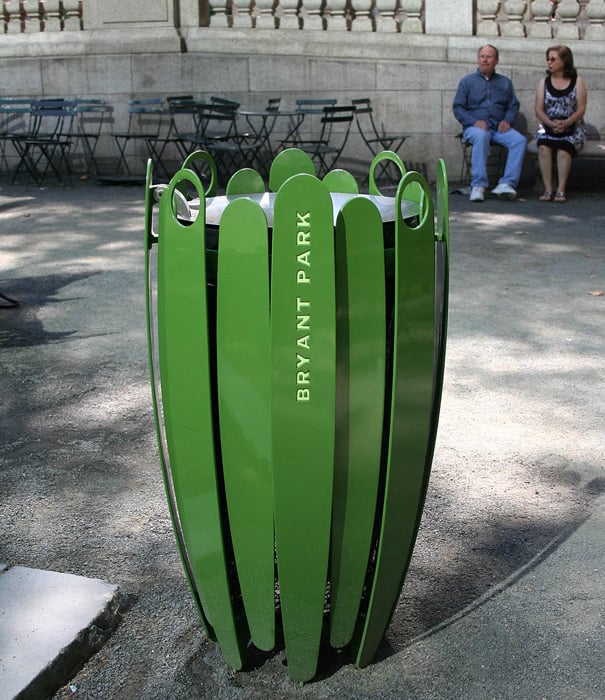

----------
Yanko Design
Timeless Designs - Explore wonderful concepts from around the world!
Yanko Design Store - We are about more than just concepts. See what's hot at the YD Store!
Designing Sustainable Products with Usability In Mind
by: Chemistry, 2011-02-16 10:00:21 UTC
Method's Adam Lowry describes how his company's innovations build on making life easier for their customers, and reducing environmental impacts at the same time.
 For Old Wine Bottles, a New Life: Works of Art from Reblown Glass
For Old Wine Bottles, a New Life: Works of Art from Reblown Glass
by: TreeHugger Design, 2011-02-19 12:00:18 UTC
 Photo: Alex Davies
Photo: Alex Davies
It's a given that the French are among the best at making, and drinking, wine. But what to do with all the empty glass bottles? There's the recycling bin, of course, but for glass worker
Jean Michel Daluzeau, there is a much more novel, romantic method. Daluzeau is the artisan behind
"L'autre vie des bouteilles" (the other life of bottles), a collection of vases, lamps, jewelery and dishes made from reblown glass bottles....
Read the full story on TreeHugger

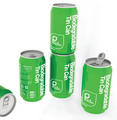


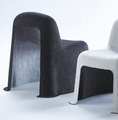
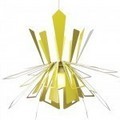



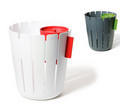
Comments by our Users
Be the first to write a comment for this item.